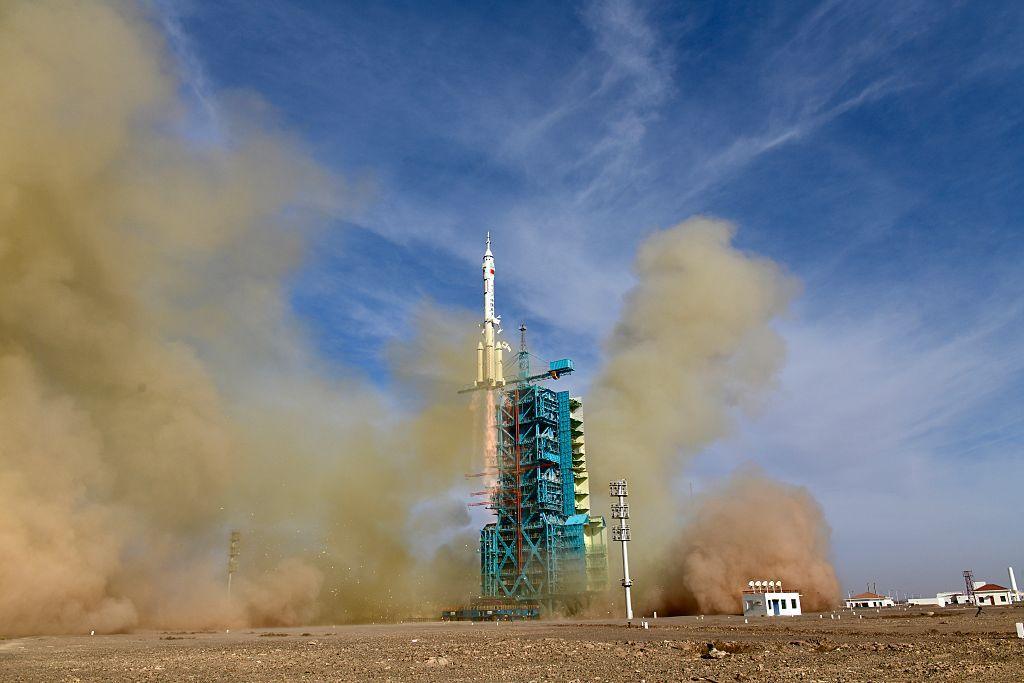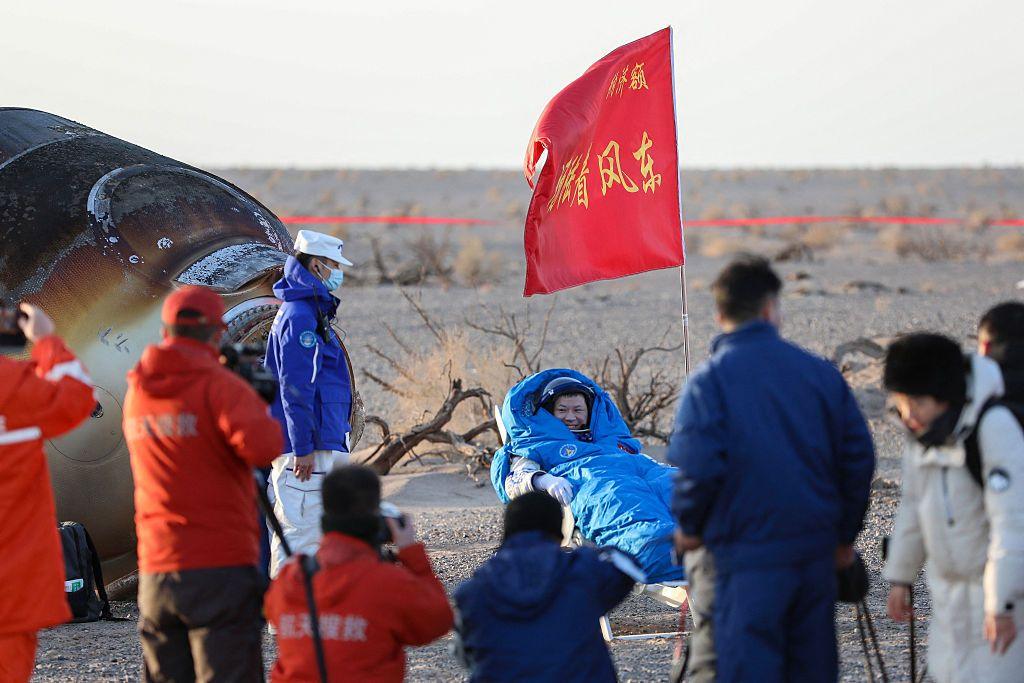Stranded in space: Why China's taikonauts needed a 'lifeboat'

Shenzhou 22 spacecraft arrives at China's Tiangong space station
- Published
Imagine being 400km (250miles) above the Earth with no way back.
That was the situation for three astronauts on board China's Tiangong space station, before the hurried launch of a craft to bring them home.
It came after another ship - called Shenzhou-20 - was damaged by a piece of space junk. During inspections in early November, engineers discovered tiny cracks in one of its windows.
Space junk or debris can be fragments of old rockets, satellites, or rock - they travel so fast in orbit, that even smallest bits can crack windows or harm equipment.
As space travel comes with lots of risks, the China Manned Space Agency (CMSA) said the cracks had made Shenzhou-20 unsafe to bring people back through Earth's atmosphere.
Space junk delays astronauts returning home
- Published7 November
What is space junk and why is it a problem?
- Published28 April 2021
Stranded astronauts back on Earth after nine months in space
- Published19 March
Timeline: Shenzhou-20 debris damage delay

A rocket carrying the Shenzhou-22 spaceship, blasts off from the Jiuquan Satellite Launch Center in China on Tuesday 25 November
Earlier this month, another crew of three Chinese astronauts – called taikonauts – had to wait nine extra days to come home from the space station because of the damaged capsule.
They were part of the original Shenzhou-20 mission that arrived in April. But ended up going home using the Shenzhou-21 spacecraft instead. A craft that had just brought the next crew to the Tiangong station.

The original Shenzhou-20 crew returned to earth onboard Shenzhou-21 earlier this month.
That swap left the new crew - Zhang Lu, Wu Fei, and Zhang Hongzhang - who arrived on 31 October, without a way to return in an emergency.
To fix this, China rushed to launch the uncrewed Shenzhou-22 craft on Tuesday 25 November.
With the craft successfully completing an automated docking with the Tiangong space station about 3.5 hours after launch.

A 3D illustration of China's Tiangong space station
It will stay docked with the station as a 'lifeboat' and is expected to bring the current crew back to Earth after their mission ends in spring 2026.
China Manned Space Agency (CMSA) says that the three astronauts onboard the space station are continuing to 'work normally' and are in "good condition".
It isn't the first time that astronauts have been temporarily stuck on space stations. Earlier this year Suni Williams and Butch Wilmore were stuck in space for nine months.
For now, the Shenzhou 20 spacecraft - the damaged one - will remain docked with the Tiangong space station.
Eventually it will be brought down to Earth without astronauts for inspection and analysis by engineers.
